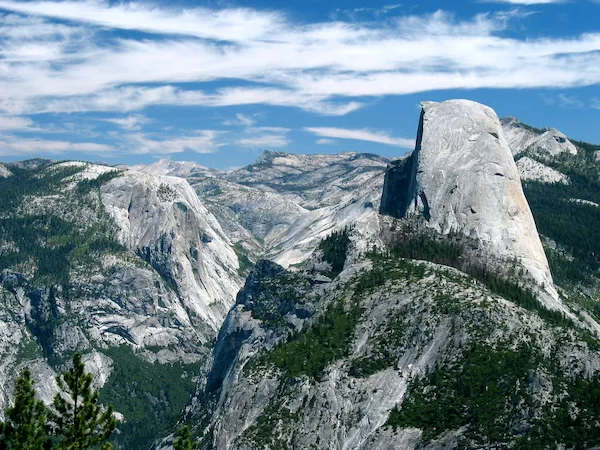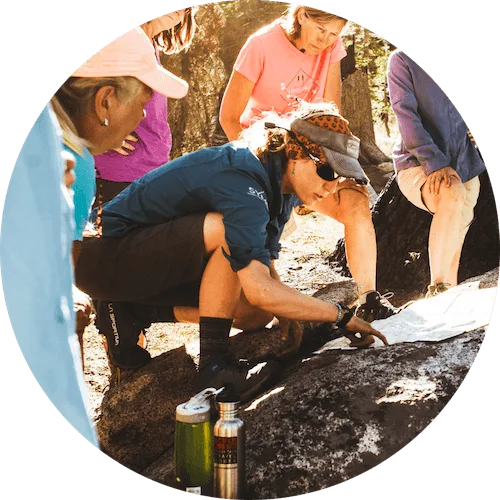If you are like us, you are already fantasizing about you upcoming summer trips. Your daydreams contain images of early morning mugs of coffee, spectacular alpine views, and high-fives as you summit a particularly challenging pass. This begs the question: How should I train for the John Muir Trail?
At SYMG we strongly believe that training can be FUN while also being effective. In general, the best way to train for hiking is to get outside and hike. However, there are some nuances that we would like to share. The difference between someone who has trained and someone who hasn’t is generally noticeable on day 1 of the trip. While we don’t offer a prescribed outline for training, we do offer general guidelines that have been “time tested” over the years. These guidelines can be typically summarized in five different categories:
- Cardio (aerobic capacity)
- Muscle strength (not just your legs!)
- Endurance (elevation not just distance)
- Acclimatization (easy to forget)
- Mental (head in the game)
Cardio: For most people, training for cardio can be the most accessible in terms of options. You can train for this in your living room, at your home gym or even a neighborhood park. There are a number of ways to train for cardio, so find one that fits your style best. Cycling, swimming, running or even just a fast walk on hilly terrain can all get the job done. The main thing with cardio training is to start with a set workout and then slowly increase it. You should feel your heart rate and respirations increasing without going “anaerobic” (panting for breath). The goal is to maximize the amount of time before you become anaerobic and to minimize your recovery time once you do. If you have access to a heart rate or power meter these can be helpful tools to monitor your progress. Otherwise, using a notebook to track your progress can also be beneficial.
Muscle Strength: Besides cardio training, it does help to spend some time specifically focused on building muscle strength. While many people still find climbing that first big pass to be tough, getting your muscles ready can help “soften the blow”. It’s easy to put all of your attention on building leg strength. Legs certainly do a lot of the “heavy lifting”, but you want to also consider shoulder and back exercises. These muscle groups do their fair share of the work as you’re lifting and carrying a backpack. Strong core support is also important to balancing on uneven terrain. Again, start with a baseline routine that feels moderately challenging and then take it up a notch each consecutive workout (while also listening to your body). Adding weight can also be valuable with your end goal to be at or beyond your anticipated total pack weight (including water weight).
Endurance: Building endurance takes time. It cannot be accomplished overnight, and this should be a key component to your workout plan. There are many ways to build endurance but you should consider the amount of time you are able to exercise for (at a moderate to difficult level) and what your recovery time is after your workout. This recovery time includes not only energy, but muscle strength and stability. Scheduling consecutive days can imitate what its like on some of our longer trips. We often remind people not to forget about training with elevation gain in mind rather than just distance. To be able to hike up 3,000’ ft to the top of a 10,000’+ pass (or even two) with a pack on, at elevation, is what you should focus on. The key is to be able to do this on consecutive days and still feel like you are having “fun” while doing it.
Acclimatization: This can be difficult to train for depending on what type of access you live near. If you have the ability to workout at a higher elevation you can incorporate this into your plan. If you live near sea level and don’t have access to elevation, increasing your cardio workout is helpful. Some guests have planned to arrive early to start the acclimatization process. If time doesn’t allow for this, not to worry! Many of our itineraries take this into consideration with shorter mileages and elevation gains built into the first couple days of your trip. Another tip that can help is to keep close tabs on your hydration on the days leading up to the trip and even during the first days while you are on the trip. Eating carbohydrates may also help the acclimatization process.

Mental: Mental training can be achieved using a few different methods. Having put the time in to train is certainly one aspect that can help you fee ready mentally as well as physically. One recommendation we give to newer backpackers is to take a personal trip using all of the gear and equipment they plan on using during their trip. This can really help familiarize with the camping essentials and make the transition between the trail-to-camp, and back-to-the-trail, a much easier process overall.
With any training plan, the main goal is that you are as prepared as possible for the investment of time and resources you have already made. Evacuating a trip is not anyone’s idea of a good time and is something we try to avoid if at all possible. Putting the time in before you arrive allows you to not only complete your trip but also have FUN while you are out on the trail. Being able to be fully present in the experience and appreciate the landscape makes putting in the hours to train totally worth it!
-Graham Ottley
SYMG Guide and General Manager


